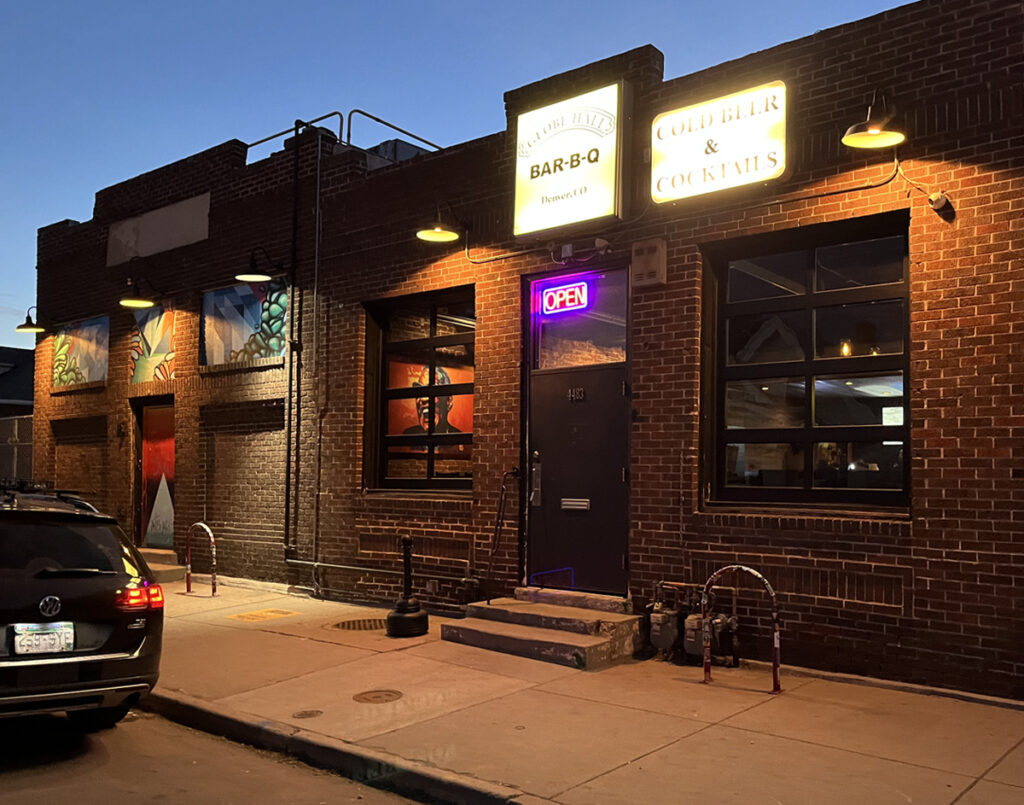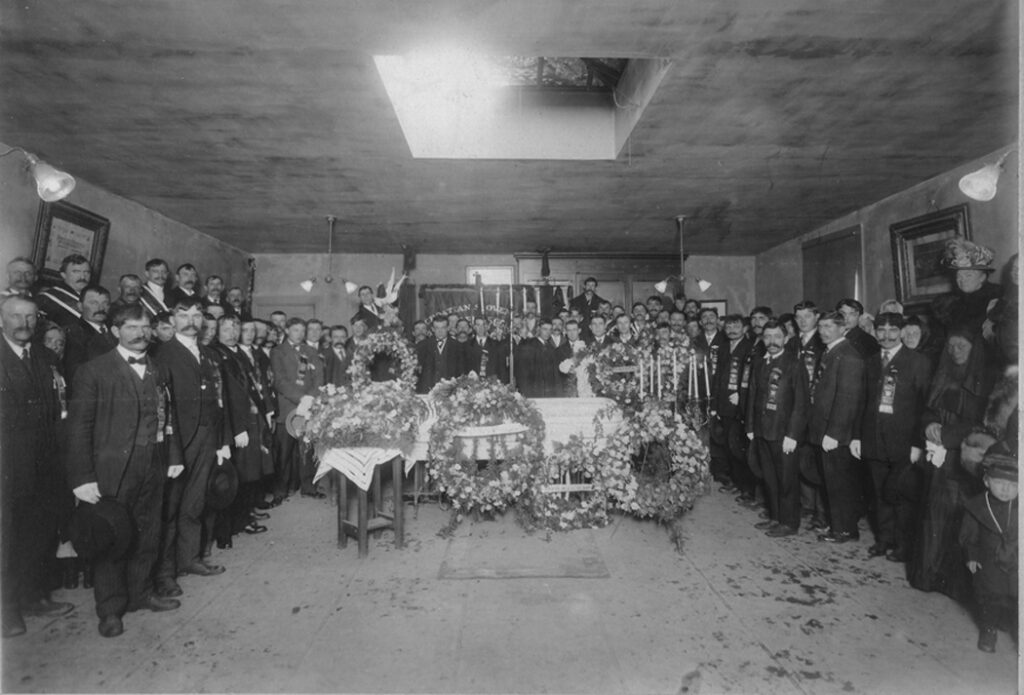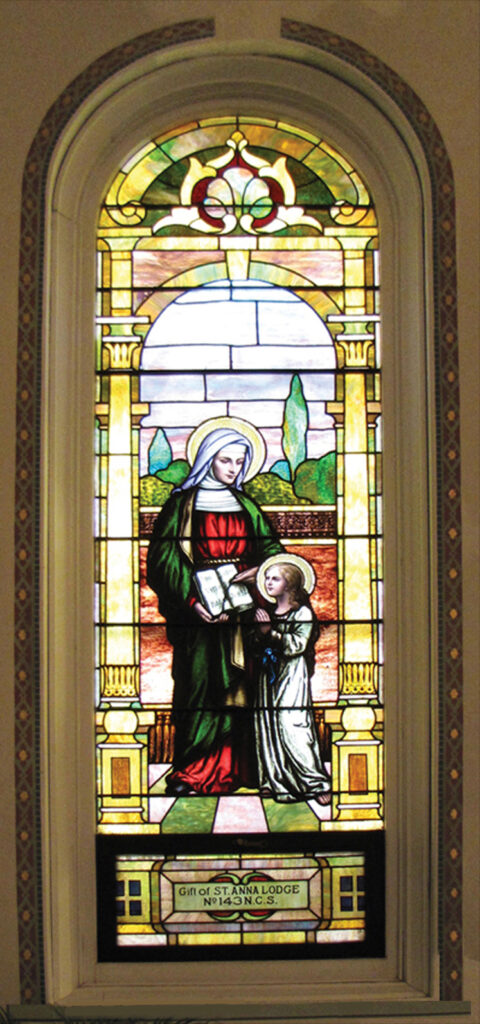By Mary Lou Egan

The buildings at 4483 and 4485 Logan are home to Globe Hall, with musical entertainment, food favorites and craft drinks. These buildings were once the location of an organization that offered many of the same amenities: regional music, ethnic dishes, robust beverages. And life insurance.
Sveti Jakov, St. Jacob’s No. 12 Croatian Fraternal Union, was established in 1894 (many Slovenes were also members). This was one of Globeville’s earliest ethnic insurance organizations and a branch of the national Croatian Society, Hrvatska Zajednica. Each month you paid your dues and, should you be killed or injured on the job, the lodge would provide a proper burial and a monthly stipend for your family. In an era before Social Security, unemployment benefits or workers’ compensation, societies like St. Jacob’s offered a financial safety net for immigrants who worked in smelters, railroads and foundries.

Fraternals were a one-stop shop for immigrants, arranging for your passage from the old country, finding you a job and a place to stay, and introducing you to important people in the community. You could send or receive money from your home country, obtain a loan (there were no banks in Globeville), read an ethnic newspaper, get a home cooked meal and learn basic English phrases.
St. Jacob’s was initially for men only and a somewhat secret society, with a member having to know a password to get into a meeting. The first year, the secret word was “Sloboda” and the next year it was “Hrvatska.”

In 1906, the ladies formed St. Anna’s Lodge No. 143; a junior department was founded in 1915.
Lodge members received the bi-weekly newspaper of the national organization, Zajedničar, published in both English and Croatian.
In early Globeville, St. Jacob’s was the place to network, make deals and get things done in the community. One of the society’s founders, Maximilian Malich, known as the “King of the Slavs,” was influential in the lodge and in Globeville. He served as a trustee of Globeville from 1896 until 1902, was a founding member of Holy Transfiguration of Christ Orthodox Cathedral in 1898, and was a passionate spokesman for the Mill and Smeltermen’s Union.
Before the neighborhood churches were built, Mass, confessions and funerals were held in the hall. There were dances, concerts and town council meetings. The Mill and Smeltermen’s Union assembled in St. Jacob’s during the bitter labor war of 1903.
After World War II, members of the Globeville Veteran’s Club gathered in the tavern for support and camaraderie, while in another “war,” the community held meetings to fight the construction of the interstate highways.

St. Jacob’s no longer owns the buildings. Its members meet in each other’s homes. But the vibe of immigrants creating support for each other resonates in Globe Hall.
Mary Lou Egan is a fourth-generation Coloradan who loves history. You can reach her at maryloudesign@comcast.net.

Be the first to comment